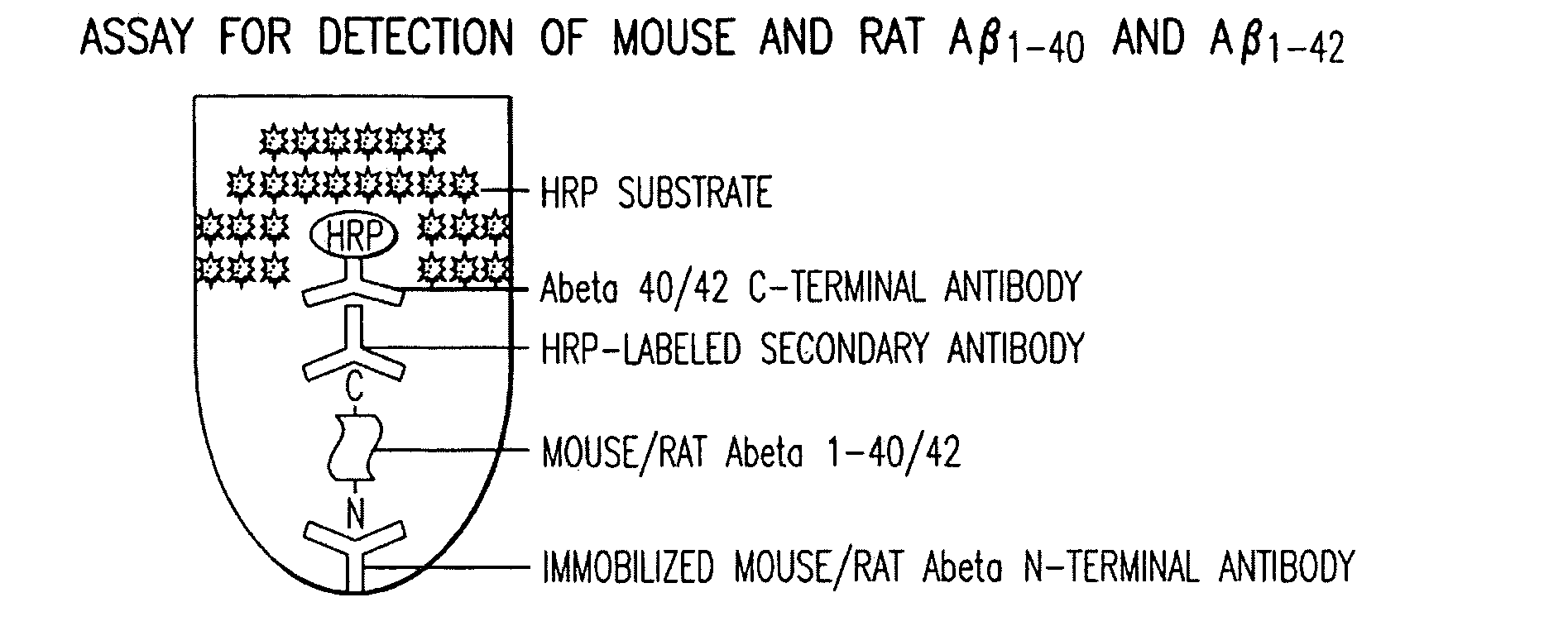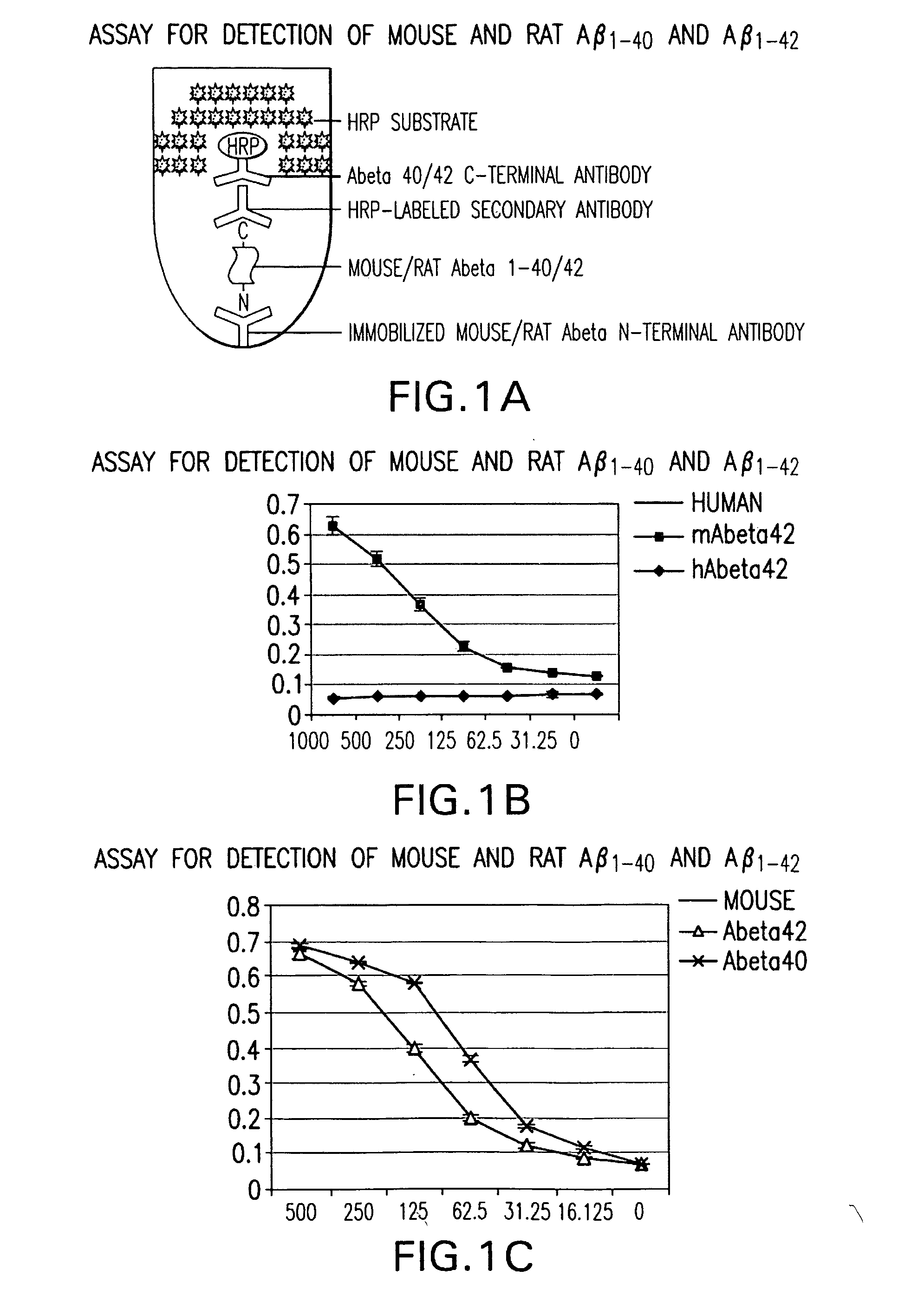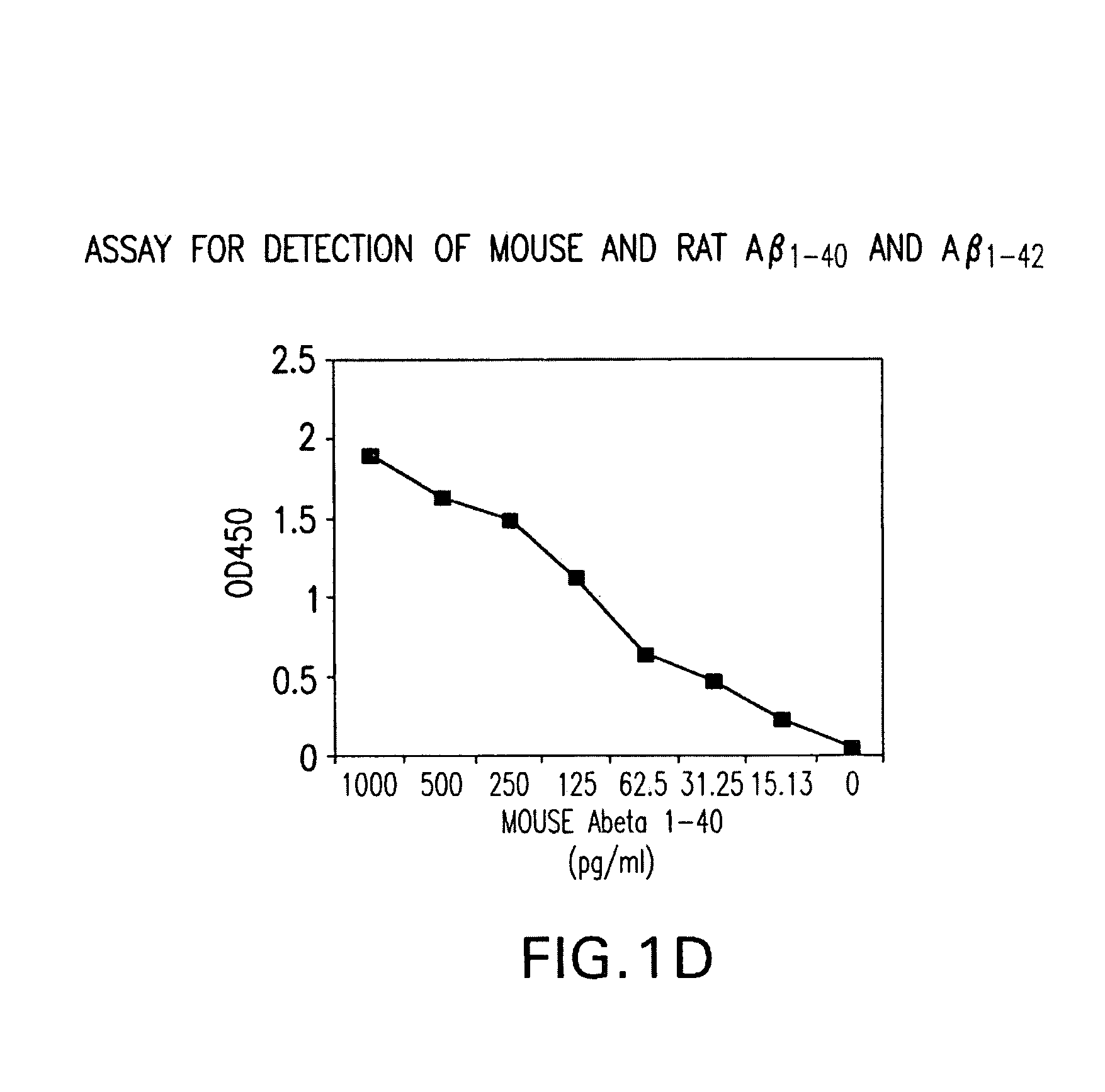IMMUNOASSAY FOR DETECTION AND QUANTIFICATION OF AMYLOID-beta PEPTIDES
a technology of amyloid beta peptide and immunoassay, which is applied in the direction of instruments, drug compositions, biocides, etc., can solve the problems of overexpression of exogenous mutants and inability to provide a physiological assessment of effects
- Summary
- Abstract
- Description
- Claims
- Application Information
AI Technical Summary
Problems solved by technology
Method used
Image
Examples
example 1
Assay for Detection of Mouse and Rat Aβ1-40 and Aβ1-42
[0044]Mouse monoclonal antibody specific for the N-terminal of mouse / rat Aβ was immobilized by incubation of 96-well polystyrene plate with 50 ul of the antibody at 4 ug / ml in each well in a coating buffer (0.1 M NaHCO3 pH 8.2) overnight at 4° C. The plates were washed thereafter each step for 3 times with 200 μl / well PBST (PBS with 0.5% Tween-20). The wells were then sequentially incubated with 50 μl / well test samples containing mouse / rat or human Aβ1-40 or Aβ1-42 overnight at 4° C. Primary rabbit antibodies specific for either Aβ1-40 or Aβ1-42 (BioSource International Inc., Camarillo, Calif.) were added to each well at 50 ul / well for a final concentration of 400 ng / ml, and incubated at room temperature. After one hour, 50 μl / well horseradish peroxidase (HRP)-conjugated goat antibody specific for rabbit IgG (Jackson ImmunoResearch Latoratories, Inc., West Grove, Pa.) were added to each well and further incubated for 1 hour at ro...
example 2
Assay for Detection of Endogenous Mouse and Rat Aβ1-40 and Aβ1-42 in Cell Culture Models, Animal Plasma and Brain Tissues
[0046]This example shows that the assay of the present invention detects and quantifies endogenous Aβ1-40 released by rat cortical neurons. The amount released can be reduced by a γ-secretase inhibitor. Cortical neurons from brains of rats at postnatal day 0 was cultured in B27 medium (Invitrogen Corp., Carlsbad, Calif.) for 7 days then the medium was changed and the conditioned medium was collected thereafter at different days and tested in the assay as desribed in Example 1 at 1:2 dilution. FIG. 2A shows that Aβ1-40 was detectable at day 4 after medium change and reached peak at day 7. The cortical neurons of 7 days of culture were treated with gamma-secretase inhibitor L-685,458 at various concentrations for 7 days and the Aβ1-40 level was measured in the conditioned medium. The Aβ1-40 level was reduced by the treatment in a concentration dependent manner with ...
example 3
High Throughput Assay for Screening Compounds that Modify Endogenous Production of Mouse and Rat Aβ140 and Aβ1-42
[0047]A collection of compounds was screened for inhibitors of Aβ production using the cortical neurons model. Cortical neurons were treated with compounds at a single concentration of 10 μM for 4 days, and Aβ levels in conditioned medium was measured as described in Example 2. FIG. 3 exemplifies a screening result. Assays were conducted in a 96-well format. Data points are mean value of Aβ1-40 (ratio to untreated) of indicated compounds from a representative chemical library. The circled data points show compounds that reduce Aβ1-40 more than 50%. Some of the identified compounds are ligands of the nicotinic receptor, particularly α7 nAChR.
PUM
| Property | Measurement | Unit |
|---|---|---|
| Time | aaaaa | aaaaa |
| Time | aaaaa | aaaaa |
| Time | aaaaa | aaaaa |
Abstract
Description
Claims
Application Information
 Login to View More
Login to View More - R&D
- Intellectual Property
- Life Sciences
- Materials
- Tech Scout
- Unparalleled Data Quality
- Higher Quality Content
- 60% Fewer Hallucinations
Browse by: Latest US Patents, China's latest patents, Technical Efficacy Thesaurus, Application Domain, Technology Topic, Popular Technical Reports.
© 2025 PatSnap. All rights reserved.Legal|Privacy policy|Modern Slavery Act Transparency Statement|Sitemap|About US| Contact US: help@patsnap.com



